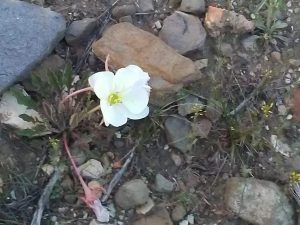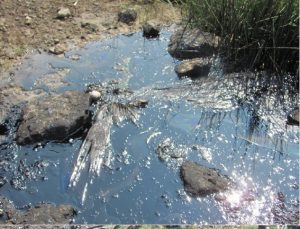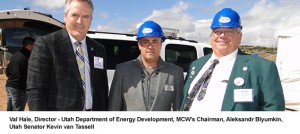UTSR gains first free expression permit of 2018.
We are concerned SITLA hurts schoolkids with the dirty energy projects they promote and pursue.

Protest in front of SITLA office in Salt Lake City
As our first action of the new year we will attend SITLA’s monthly meeting at 9 am Thursday January 4.
After the monthly meeting UTSR will have our free expression event with banners and protest tents at the SITLA retreat located at the Falls event center at 600 east and 600 south from 12-3:30. We will be setting up at 11 am.
Salt lake City provides this document with interesting information about free speech.
Free Expression Definitions
– SLC Free Expression Activity Permit Application
QUICK REFERENCE: First Amendment
Public Safety
Expressive Conduct
Fighting Words
Interference
Risk of Violence
1. The First Amendment’s guarantee of the right of free expression is a fundamental element of our democratic system of government. However, that right of free expression is not absolute. Some kinds of speech, such as obscenity, defamation, and fighting words, are not protected by the First Amendment. In addition, to further significant governmental interests, the government may regulate the time, place, and manner of the exercise of protected speech rights. An example of a “time” regulation is an ordinance banning loud noises in residential areas
during the night. An example of a “place” regulation is a requirement that parades not be held on certain busy streets. An example of a “manner” regulation is a restriction on the size of signs carried by picketers. The government cannot impose speech restrictions simply because it disagrees with the message of the speaker. In other words, government regulation of speech must be “content neutral.”
Furthermore, a time, place, or manner regulation must advance a significant
governmental interest, not restrict more speech than necessary to further that interest, and leave speakers with an ample alternative means to express them.
2. The City has a significant and compelling interest in maintaining the safety of people on streets and sidewalks. That interest sometimes justifies restrictions on speech rights. For example, the City can pass laws making it illegal to stand in the middle of the street, or to block pedestrians on sidewalks. Those laws are valid, even when enforced against a person who wants to speak in that street or on that sidewalk. The City may also establish temporary regulations for a specific event to address the particular public safety concerns related to that event. For example, a particular event may generate much heavier pedestrian traffic than normal. Furthermore, the police have a duty to protect people exercising their free speech rights from violence aimed at them by a hostile audience.
3. Protected expression is not limited to the spoken or written word. People may communicate a message through expressive conduct, such as wearing an armband, or burning the United States flag, a draft card, or an effigy. A person’s conduct is expressive if he or she intends to convey a particularized message, and
if it is very likely that people viewing the conduct will understand the message. Any
government attempt to restrict such expressive conduct must be unrelated to the suppression of free speech. For example, the government could validly pass a law making it illegal to burn anything (including the American flag) in a particular place due to the fire hazard. Such a law is not aimed at speech, but rather at public safety. On the other hand, the government cannot validly ban the burning of the flag simply because it believes that burning the flag is unpatriotic. Based on those principles, courts have held that many instances of expressive conduct were
protected, even though the conduct ridiculed government or religious leaders, religious beliefs, or otherwise seriously offended many people.
4. As noted above, “fighting words” are not protected by the First Amendment, so the government can treat them as disorderly conduct or a breach of the peace. Fighting words are defined as personal insults: (1) directed at a particular person or small group of people, (2) inherently likely to create a violent reaction, and (3) that play no role in the expression of ideas. It is not enough that the words are very insulting or highly offensive or arouse some people to anger. Also, words are not fighting words if they are spoken to a crowd. Listeners are expected to turn their heads and ignore such speech. Whether particular speech constitutes fighting words depends on the circumstances of the situation. However, even when speech is extremely annoying or offensive to listeners, courts have been very tolerant and protective of such speech. In one case, a door-to-door missionary played for two men a recording that attacked the men’s religion. The men became incensed
and were tempted to strike the missionary. The United States Supreme Court held that the missionary’s speech (the recording) was not fighting words. Expressive conduct is also subject to the fighting words analysis. As with traditional speech,
however, courts are very protective of such symbolic speech. For example, the United States Supreme Court held that a law was unconstitutional that made it illegal to “desecrate a venerated object” such as a flag, if the desecrator knew it would seriously offend observers. The court overturned the conviction of a man who burned an American flag in protest. Similarly, courts have held that the display, ridicule, and even burning of effigies of public figures do not amount to fighting words. However, there are limits. In a recent case a group of protesters formed a semicircle around a woman and for six minutes shouted at her that she was “a whore, harlot, and Jezebel.” A court held that those were fighting words under the circumstances. Notably, the words were directed specifically at the woman.
5. Speakers in a speech event have a constitutional right not to have their message interfered with by other speakers. A physical intrusion is such an unconstitutional interference. For example, the sponsor of a private parade cannot be forced to allow in the parade a float that communicates a message with which the sponsors disagree. Also, if a group reserved public space for a silent candlelight vigil, it would be improper for the government to grant a rock band a permit to hold a concert right next to the vigil. Such interference could also include stalking a speaker in an intimidating way or trying to block his sign with an even larger sign. Depending on the location and the circumstances, heckling or shouting down of a speaker may constitute an infringement on that speaker’s free speech rights. The government is justified in restricting speech aimed at unwilling listeners if the listeners are a “captive audience,” meaning they cannot conveniently avoid the speech by turning their heads or walking away. Under this principle, courts have upheld laws requiring protesters to keep their volume down near hospitals, courthouses, and private residences, in order not to disturb people in those private places. Courts have also upheld bans on demonstrators entering into churches without consent, but courts generally have not upheld efforts to prohibit protesters from demonstrating on the sidewalk in front of places of worship (except to the extent protesters block access to the church or their noise penetrates into the church).
6. The United States Supreme Court has said of the risk of violence: “A function of free speech . . . is to invite dispute. It may indeed best serve its high purpose when it induces a condition of unrest, creates dissatisfaction with the conditions as they are, or even stirs people to anger. Speech is often provocative and challenging.”
It is true that listeners sometimes dislike the message of a speaker, lose their temper, and become violent. However, in such situations the speakers retain their constitutional right to speak (short of “fighting words”), and it is the duty of the police to protect the speakers and deal with the violent listeners. Courts reject a “heckler’s veto” that would silence a speaker because of a hostile audience reaction. On rare occasions, the government may have such an expectation of violence that it will impose additional restrictions on how or where speech can occur. For example, if two groups with strongly opposing viewpoints that have a history of violence intend to hold rallies next to each other, the police may require them to remain a safe distance apart to reduce the risk of violence. Similarly, if members of a group have a history of blocking access and/or engaging in physical violence while exercising their free speech rights, restrictions such as “buffer zones” may be appropriate.


























